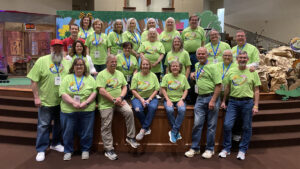When deciding which curriculum to use for your class or children’s ministry, it is important to be intentional. A lot of people say, “I want to bring meat to my class and not just milk.” This means you should be teaching God’s truth from Scripture to build up and equip for daily living. Obviously, the application is different for children than adults. We must teach what the Bible actually says and listen to what God is teaching rather than teaching what we think it says.
Watch out for the danger of making a lesson so simple for children it says something that was not intended.
Fortunately, many good resources are available to help if you are involved in the selection of curriculum for your church or class. Intentional and prayerful research is a must. Consider these ways to make your search easier.
Ensure your choices are age-appropriate. It can be easy to go over children’s heads when teaching, but being aware of their learning levels will help.
A resource below will help guide the process. This does not mean you can’t introduce big words or ideas to children, but do so in a way that best fits their age.
Another question often comes up when talking about age-appropriate curriculum: What if there is a large number of students with a wide age range?
Most of the time it is best to target the middle group — not to be too far above the younger children or lose the interest of the older ones. For example, if your children’s worship is for first through fifth graders, aim for the third grade level. This will help balance out the other ages.
Use the strengths of your leaders and children. If you have leaders who are musically inclined, find a curriculum using music as part of the teaching plan. If your children’s ministry is full of athletes, use games to teach them more about Jesus. The same could be said of arts and crafts, large groups, small groups and table activities. If you know your people, you can use curriculum that will make teaching easier to engage. Don’t make it harder on your teachers than it needs to be. Prayerfully match the gifts with the curriculum.
Find something engaging and creative. We want children to come to church to hear the good news and know God loves them and has a plan for their lives. That message and our focus are too important not to make teaching engaging and creative. That is what Jesus did with His stories and object lessons.
You could have a science experiment to help further your message or a musical motion time to help children be more engaged. Yes, you want to sit down and truly study God’s word and dive into what the Bible says — the Bible is always our text and the center of everything we do. Using the best resources available is being a good steward of time, money and knowledge. Children, especially in today’s culture, learn through many different means, so let’s make use of all that is appropriate. Since the Bible should be the foundation of everything you teach in your children’s ministry, look for resources that allow for creativity but point to the biblical lesson.
Choose gospel centered curriculum. Everything in the Bible points to salvation through Jesus. We should follow that example. This does not mean you have an altar call after each Bible study with children, but letting them see and hear the gospel message is most important. Sharing the gospel is urgent because you never know when it will click in their heads. The curriculum you choose must be gospel-centered. This is the most essential component. As you research curriculum you should always be asking: “What will this teach our kids about Jesus?”
Suggested resource
Ages & Stages: Levels of Biblical Learning lifeway.com/en/special-emphasis/levels-of-biblical-learning.
First published in The Baptist Paper.



